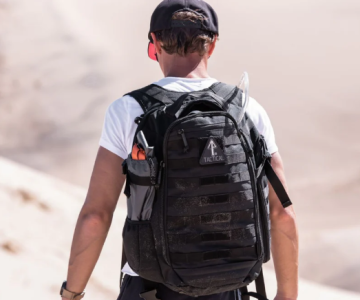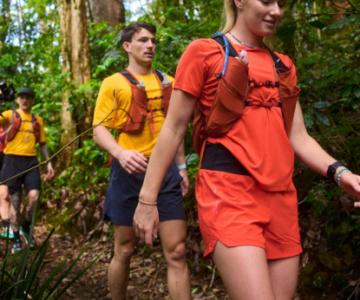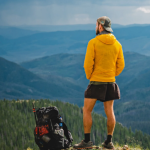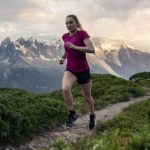If you’ve ever watched an ultralight backpacker breeze past you while you struggle with a heavy pack, you might have wondered if carrying less really does make the hike easier. But is the ultralight approach worth it? Does it come with risks, especially when it comes to comfort and warmth? In this post, we’ll explore the benefits and challenges of ultralight backpacking to help you decide if it’s the right choice for your next adventure.
What Does ‘Ultralight’ Really Mean?
Before diving in, let’s clarify what ultralight backpacking is. The term “ultralight” is often misused, and you might have heard backpackers claim they’re going ultralight while still lugging around a 65-liter pack packed with extra gear. So, what exactly counts as ultralight?
- Ultralight base weight: 10 lbs
- Lightweight base weight: 17 lbs
- Traditional base weight: 25 lbs
Base weight refers to the weight of your gear, excluding food, water, and fuel. Historically, backpackers used to carry packs weighing between 25 and 30 pounds. Over the years, lighter gear has allowed backpackers to reduce their base weight to 17 pounds or less. The goal for ultralight backpackers is to keep their base weight under 10 pounds, but reaching this target isn’t easy, especially if you’re hiking in less-than-ideal conditions.
Do You Need to Go Extreme?
While aiming for a 10-pound base weight sounds appealing, it’s important to understand that going ultralight requires both experience and the right conditions. If you’re new to backpacking, starting with a lighter setup rather than an extreme ultralight one is a smarter approach. For example, you might upgrade your tent and sleeping bag but still carry extra layers to ensure you’re warm enough. Over time, you can gradually reduce your pack weight as you gain experience.
Benefits of Ultralight Backpacking
Aside from the obvious advantage of a lighter pack, ultralight backpacking offers several other key benefits:
1. Greater Distance and Speed
With a lighter pack, you expend less energy, allowing you to cover more miles each day. This is especially helpful when resupply points are far apart or when you want to carry less food and supplies. The lighter your pack, the faster you can travel, which means you can explore more.
2. Less Strain on Your Body
Carrying less weight reduces the strain on your muscles and joints, especially your back, knees, and feet. A pack that’s too heavy can lead to chronic pain and injury, but keeping your pack light will make hiking more comfortable in the long run.
3. Improved Agility
A lighter pack means you can move more freely and efficiently. You’ll have better balance and agility, making it easier to navigate challenging terrain such as river crossings, steep inclines, or downed trees.
4. Comfortable Footwear
With a lighter pack, you can opt for trail shoes instead of heavy hiking boots. Trail shoes are more comfortable, breathable, and quicker to dry, making them ideal for ultralight backpackers. They also encourage a more natural gait, improving your overall hiking experience.
5. Enhanced Durability of Gear
Many ultralight items, such as packs made from DCF (Dyneema Composite Fabric) or ultralight tents, are actually more durable than their heavier counterparts. These items are designed for strength and reliability while remaining light, so you don’t have to worry about sacrificing durability for the sake of weight.
Drawbacks of Ultralight Backpacking
As with anything, ultralight backpacking isn’t without its downsides. Here are the main challenges to consider:
1. High Initial Cost
Ultralight gear can be expensive. For instance, a high-quality down sleeping bag costs between $250 and $400, while an ultralight tent might set you back around $500. Upgrading your gear to meet ultralight standards can easily exceed $1300, which is a significant investment. However, this cost is spread over many trips, and you’ll be saving weight and increasing comfort in the long run.
2. Requires Experience
Ultralight backpacking isn’t for beginners. It takes time to figure out how to choose the right gear that provides enough protection, warmth, and comfort. Experienced hikers often spend seasons refining their setups, learning what works and what doesn’t. If you’re new to backpacking, you might want to start with a lightweight kit and gradually transition to ultralight gear once you’re more familiar with the demands of the trail.
Factors to Consider Before Going Ultralight
Before jumping into ultralight backpacking, take a few key factors into account:
1. Your Current Gear and Budget
Upgrading to ultralight gear is an investment. If you already own lightweight gear, replacing a few pieces (like your tent or pack) might be all you need to achieve a 10-pound base weight. But if you’re still using heavier gear, like a synthetic sleeping bag and a self-inflating pad, getting ultralight gear may require a larger budget and more gradual upgrades.
2. Solo vs. Group Hiking
If you’re hiking with a partner, you can share gear like a tent or stove, which reduces your individual load. Sharing a two-person tent, for example, allows you to halve the weight of your shelter. On solo hikes, however, you may need to focus more on cutting weight from your own kit, which means opting for lighter shelters like trekking-pole tents or tarps.
3. Weather Conditions
Your gear choice should always match the conditions you’ll encounter. If you’re heading out in good weather, ultralight gear may be sufficient. But for colder or wetter conditions, you’ll need to ensure you have enough protection, even if it means carrying a bit more weight. Always check the weather forecast closely before your trip and adapt your gear accordingly.
Final Thoughts
Ultralight backpacking offers a world of benefits, from lighter packs to improved agility, but it’s not the right choice for everyone. If you have the experience and the budget, it can transform your hiking experience, making it more enjoyable and efficient. However, if you’re new to backpacking or plan to hike in harsh conditions, starting with a lighter kit might be more suitable. Regardless of your approach, the key is finding the balance between comfort, safety, and weight reduction to create a pack that fits your needs. Happy hiking!





